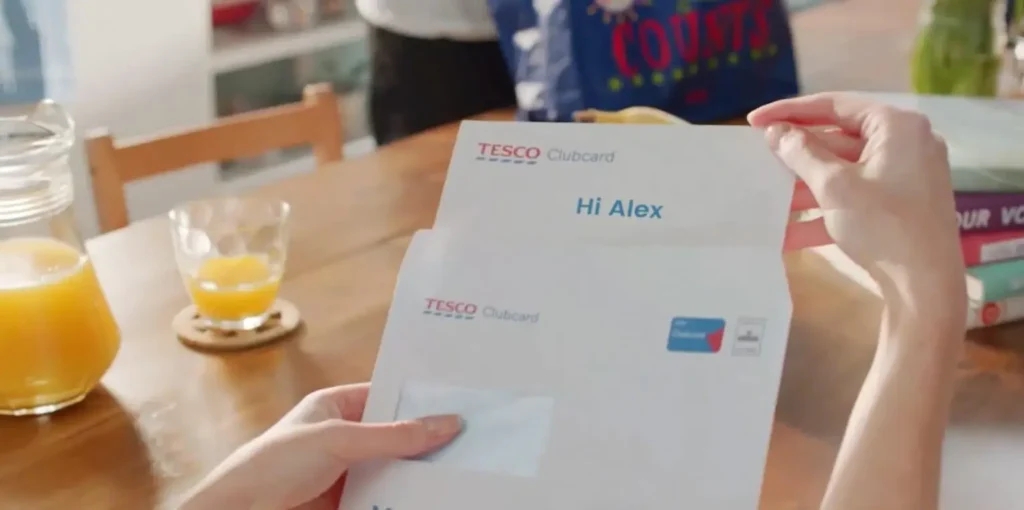For marketers, staying on top of the latest trends is crucial to designing future strategies that get results. With video dominating the content landscape and constantly evolving, video marketing is no exception. From the latest technology to popular content styles, there are a handful of new developments in video marketing expected to make an impact this year.
From the latest technology to popular content styles, there are a handful of new developments in video marketing making an impact this year. Consumer habits are shifting, platforms are changing and brands are finding smarter, more strategic ways to use video across every stage of the customer journey.
To help you stay ahead of the curve (and maybe even inspire your next big video campaign), here are 9 video marketing trends to know in 2025.
1. AI Video Expands
With everyone talking about ChatGPT and the creative power of artificial intelligence, it was only a matter of time before AI videos came on the scene.
The generative AI market is expected to reach $66.9 billion this year and over $442 billion by 2031.
Meta announced Make-a-Video at the end of 2022, a text-to-video tool that can create short video clips from basic text prompts. Think of a short clip of a dog riding a bicycle or a teddy bear painting his self-portrait. Not to be outdone, Google soon followed with Imagen Video, a similar tool showing things like a teddy bear running in traffic in NYC, an elephant walking under water on his birthday and a wooden boat taking off into space. And who’s to say these aren’t things the world needs?
While there are many other text-to-video tools out there, most don’t create a video with a lot of practical use. They’re also pretty short, around the length of a GIF.
That is, until we launched Lucas. Lucas is the world’s first AI able to create complete videos via a simple chat input. Users chat with Lucas to tell him what they need — an ad for their cashback credit card, a video sales pitch, etc. — and he instantly generates a few videos to choose from. You can edit the video text, change the voiceover artist and more right in the interface.
Here’s one example of a video Lucas made without any additional edits, just based on a text prompt.
Beyond text prompts, Lucas can transform documents, webpages and even your knowledge base into engaging, branded videos. Thanks to a process called retrieval-augmented generation, he’s trained on your specific content, so your videos are always accurate and on-brand.
And yes, your audience is ready. According to data from our latest State of Video Technology Report:
- 65% of consumers are open to or interested in receiving AI videos from brands.
- That number jumps to 78% for millennials and 76% for Gen Z, both key digital-first demographics.
- Consumers are 2x more likely to prefer receiving a short AI-generated video based on a document than the document itself.
We only expect AI video to grow from here. Can’t wait to see what the future brings!
2. User-Generated Content Goes Interactive
User-generated content is already a huge part of video marketing, with campaigns like the GoPro Awards encouraging fans worldwide to film, edit and submit their own content. In 2025, though, UGC is set to explode even more as customizable videos pick up steam.
What’s a customizable video? These videos update in real time based on information viewers input or select directly in the player. The result? Content that is relevant, tailored and way more engaging for each viewer.
Rather than passively relying on content that people create on their own, brands can now empower viewers to become creators. Try it out for yourself with our car calculator demo below.
This technology brings UGC to a whole new level. With the foundation of the video provided for them, it’s easier for users to create their own content. This leads to more user-generated videos and a much greater reach and engagement than a single piece of brand content.
Another exciting use case? Year-in-review campaigns where customers can pick their favorite highlights — such as milestones, features, etc. — and generate their own customized video. For instance, CCP Games let EVE Online players pick the character, achievements and language featured in their personalized recap video.
This type of tech allows brands to have more control over their branding in user-generated content. Better yet, it opens up a powerful way to collect first-party data. By letting customers interact with videos, brands can learn more about their preferences and behavior in a compliant, user-approved way. A win-win in our books!
3. Short-Form and Snackable
From TikTok to Instagram Reels to YouTube Shorts, short-form video has been taking over nearly every content platform out there. The trend is expected to continue, with videos staying “snackable” to capture short attention spans and breaks in between browsing other content.
The numbers speak for themselves. YouTube Shorts saw an average of 70 billion views a day in 2024, a 40% increase from the year before. Clearly, we’re living in the era of quick and scrollable storytelling.
Being able to do more in less time is now a necessary skill for marketers looking to engage with consumers. In many cases, you’ll have less than 30 seconds to both get the viewer’s attention and make your point.
Luckily, that’s the beauty of video. You can simultaneously use visuals, audio and text to get your message across in a short amount of time. Just keep in mind these best practices for short-form video.
- The first few seconds are crucial. Capture their attention right at the beginning so they don’t swipe or click away.
- Keep it focused. Don’t try to cram in too much. One clear message is more impactful than a mash-up of ideas.
- Keep mobile in mind. Research company Statista found that nearly 70% of United States consumers watch digital video content on their smartphones, so don’t neglect vertical formats and have links be mobile-friendly. With the latest video tech, you can even create a video that can adapt to different formats based on the viewer’s device.
- Where you post affects what you post. Each platform, from your website to apps, has a particular style of content that performs best and often a unique audience. Be sure to create your video with the channel in mind.
Remember that short-form doesn’t mean cutting corners. Instead, you want to cut the fluff and get to the heart of your message. When done well, these bite-sized videos can carry serious weight and leave a lasting impression without asking for too much time.
4. Personalization Stays Relevant
While personalization has been a key ingredient in digital marketing for years, it’s become increasingly beneficial for video. Rather than be bombarded with irrelevant content, viewers are expecting the videos they see to be catered to their interests. Think of the data-driven targeting with Netflix’s recommendations or TikTok’s “For You” page and add in 1:1 personalization — your video knowing you by name.
And marketers need to keep up. Using customer data, videos can be personalized to the individual viewer. Considering the fact that 72% of consumers say they only engage with personalized messaging, this will be a trend worth investing in.
The possibilities are truly endless when it comes to personalizing videos. They can be used to welcome a new customer, share an exclusive offer or proactively answer common questions so your call center isn’t overloaded.
And of course, there are the incredibly popular year-in-review recaps.
These engage customers with personalized highlights of memorable brand experiences. For example, recap videos in the gaming industry might show off a player’s top achievements, while a data-driven travel video could recap destinations visited or miles earned. The best part? Customers love sharing them with their own social network, increasing reach and virality.
Ultimately, Personalized Video isn’t going anywhere in 2025. If anything, it’s becoming more expected. Audiences crave relevance, and video is one of the most powerful ways to deliver it at scale.
5. Video Gets Smart About Context
Context matters — in life and in marketing. The way we communicate changes depending on the situation, so why shouldn’t our video messages?
Contextual video adapts to the viewer’s environment and behaviors to deliver content that’s relevant at that moment. It’s not just about who your customer is, but where they are, when they’re watching and even what device they’re using. It’s these extra layers that take personalization to the next level.
How can you use this kind of innovation? Imagine a customer opening a video from a travel brand on a snowy morning. The experience might kick off with a warm “Good morning!” followed by a recommendation for a sunny tropical getaway.
Video can adapt in other ways, as well. It can go vertical for mobile or swap content based on the latest data. Need to show a map to the nearest service center? Done. Want to add a live countdown to an expiring sale? Easy.
It’s all possible with contextual video powered by live data. Here’s an example of a real-time greeting below so you can see it in action.
When video aligns with context, it creates a personalized, relevant experience that resonates with the viewer in the moment. As this trend grows, expect contextual video to revolutionize the way brands connect with their audience.
6. Time To Go Live
Enabled by better streaming quality and the roll-out of “live” features across various platforms, live streams have been propelled to the mainstream. One study estimates that the live streaming market will reach $247 billion by 2027.
Going live on social media or streaming platforms like Twitch is a great way to engage with your audience in real time. In fact, in an experiment run by Biteable, Facebook Live outperformed standard video posts across the board, reaching more people, keeping them watching longer and driving stronger engagement.
And that’s just one of the advantages of going live. One survey reported that 98% of enterprises now leverage live streaming when it comes to key events like major corporate announcements or product launches. Why? Because live streaming empowers them to effectively communicate with employees (96%), customers (83%) and investors (76%), according to 300 major enterprises based in the U.S. and U.K.
Another bonus for live videos? Earning top priority on many social platforms. Because they occur in real time, social media algorithms often show live streams first. By going live, not only can you connect in real time with your audience, but you may even be boosted by the platform itself.
7. Accessibility Leads to Authenticity
As it’s become easier to create and publish videos, the landscape of content has leveled out. With minimal barriers to entry, video content these days is created by anyone and everyone.
The result? It’s no longer all about fancy b-roll or high-level productions. Authentic and relevant videos have emerged as the most engaging kind of content, and this trend is showing no signs of slowing down.
This is great news for brands and companies who have been hesitant to jump on the video marketing train. Don’t worry about whether your scenes are Hollywood-quality. It’s about the quality of the actual content. Simpler videos with 2D animation can inspire as much engagement as highly produced content, so long as it’s relevant, authentic and on-brand.

This trend is being spearheaded, in large part, by Gen Z, which values authenticity and transparency from brands. Forget about high-paid models and fancy shoots. Over 80% of this video-loving generation trusts a company more when they use actual customers in their ads (all the more reason to leverage UGC in your video content).
And it’s not just Gen Z. In fact, 63% of consumers across all age groups prefer videos that feel authentic and relatable, while only 37% say they need to be professionally polished. This makes it clear that high-level production doesn’t have to be a barrier anymore. Embrace UGC, create videos that genuinely reflect your audience’s experience and you’ll make an impact.
8. Shoppable Videos
Video has long been used to elevate the online shopping experience. Video demonstrations of products, customer video reviews, hauls, ad spots and more have all played a part in encouraging customers to buy a brand’s product or service.
Post on
Thanks to Interactive Video, the viewing experience can be transformed with clickable elements. Shoppable videos, where you can make online purchases by clicking directly in the video, are expected to gain even more traction in 2025.
Pro tip: These videos can even be linked to data like retail inventory, allowing them to be updated in real time to reflect the most relevant products. That means fewer missed sales opportunities and a smoother customer experience.
The biggest advantage of shoppable videos is that they remove friction from the buying journey. Viewers no longer have to search for what they just saw. They can simply tap and buy. The ease with which viewers can purchase an eye-catching product in a video directly drives conversions. See how it works by clicking some of the shoes in the demo below.
It doesn’t stop there. Live-stream shopping broadcasts are taking over social media. From Instagram to TikTok to YouTube, platforms are doubling down on live commerce as a key feature for driving engagement and sales. TikTok in particular has quickly become a major player and estimates that by 2027, it could generate up to $77 billion a year from LIVE alone.
Meanwhile, live ecommerce sales as a whole in the United States hit $50 billion in 2023, and forecasts indicate that by 2026, live online shopping will grow by 36% and make up more than 5% of all ecommerce sales in the country.
To sum up, pretty soon, video content you can shop from will be the standard, whether it’s in app, on social media, on the web or sent via email.
Bonus: Video Takes Over CX
This is an ongoing trend we’ve noticed in previous years, and it’s only growing.
Proven to be a versatile tool, video is going beyond the world of advertising and even marketing to upgrade the customer experience in new ways. Whether it’s a service interaction or a renewal message, touchpoints across the customer journey can be elevated through the use of video.
With video, those touchpoints become more human — personalized and engaging. It’s VIP treatment for every customer, even when you have millions of customers around the globe.
Take what happened in the mortgage industry with forbearance, for example. As customers saw their forbearance period coming to a close, they were panicking — and calling their mortgage company en masse. In this situation, a Personalized Video is the next-best thing to a customer care representative talking with you personally. The videos calmed customer concerns, helped answer their questions and relieved pressure on call centers, driving down call volume by as much as 73%.
And that’s just the beginning. More and more, it’s CXOs — not just CMOs — looking to incorporate video into their strategy. We’re seeing video span the entire customer lifecycle, from personalized onboarding experiences that make customers feel instantly welcomed to interactive support videos like the one above, that allow viewers to self-serve and find answers on demand.
This year, the use of dynamic videos as a tool for handling customer service and improving CX is expected to grow. Videos personalized for the viewer are particularly well-suited to this purpose since the information included is specific to each individual, adding a human touch to the customer experience.
The Future of Video Marketing
Need a little help tapping into those upcoming trends? Idomoo’s Next Generation Video Platform makes data-driven video marketing simple.
Specializing in personalized, interactive and contextualized videos, our platform is equipped with automation tools and an intuitive web interface to get your campaign up and running in a matter of days. That includes the most cutting-edge video trends, like UGC-enabled videos and AI videos.
Whether you’re looking to boost engagement, drive conversions or connect more meaningfully with your audience, we’ve got you covered. Our platform is flexible, scalable and built to grow with you, making it easy to stay ahead of the curve.
From real-time data integration to dynamic creative and omnichannel delivery, you’ll have everything you need to create video content that actually makes an impact. So what are you waiting for? Learn more about how we can help you take on the future by booking a demo with one of our video experts today.






